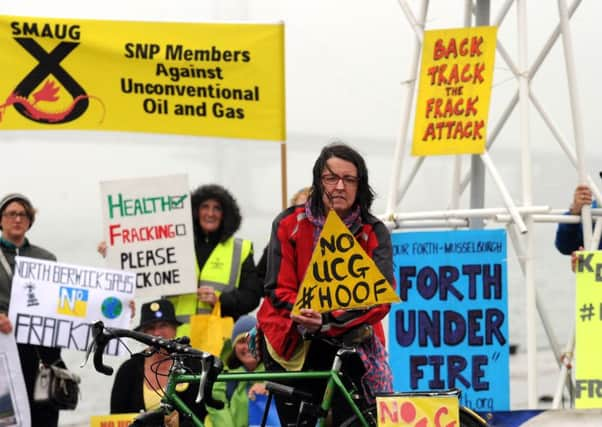Ilona Amos: No future for fossil fuels or fracking


Climate experts say the sharp increase last year is in part due to the weather phenomenon El Nino, but the main driver is human activities such as burning of fossil fuels.
The current episode of global warming is attributed to increasing emissions of carbon dioxide and other greenhouse gases into earth’s atmosphere. The annual mean concentration has jumped by more than 40 per cent since the start of the industrial revolution. Current levels are the highest in at least 800,000 years – possibly even 20 million years. The build-up of gases traps heat, so the planet warms and weather patterns become increasingly erratic. Last year was also the hottest ever measured.
Advertisement
Hide AdAdvertisement
Hide AdThese figures make sobering reading and highlight the urgent need to curb emissions on a planetary scale. However, we must not let the scale of the task or the perception that the worst culprits are doing little about it stop us from taking bold action on a more local scale.
Scotland has been hailed as a world leader for its ambitious climate targets, and we should be proud of that. But it has never been more important to keep up the momentum and up our efforts to radically slash emissions.
We are taking many little steps in the right direction, from increasing recycling to restoring peatlands. But there is much more that could and should be done.
Scotland’s last remaining coal-fired power station, at Longannet in Fife, closed down after 45 years of service at the end of last month. The plant belched out as much as 10 million tonnes of carbon dioxide annually at its peak – a fifth of Scotland’s total. Its closure is undoubtedly good news in the fight to curb emissions, but we need to take this line of thinking further and look away from fossil fuels as a potential energy source for the future. We must focus on renewables and low-carbon options.
World leaders and environmental experts at the international climate summit in Paris last December last year agreed to a non-binding aspiration to restrict global temperature rises to 1.5C by 2100 in the hope of avoiding “dangerous” climate change.
As we begin anticipating how the next government might steer our course towards this aim and our national targets, it’s time to consider how the parties stand on some key issues. Take fracking – or hydraulic fracturing, as it is properly know. The UK government has come under fire for announcing fast-track planning regulations to make it easier to expoit unconventional gas reserves, despite fears over the safety of the technique. A moratorium is currently in place north of the Border, though nine firms have applied for rights to explore for shale gas at 19 sites here.
Surely, even if extraction methods turn out to be harmless, we should focus on a fossil-free future. Even if fracking can satisfy the 15 years of Scotland’s gas demands that experts have estimated, we should leave it where it is.
Both the Greens and more recently Labour have pledged to outlaw fracking if they get into power, while the LibDems have performed a dramatic U-turn on the issue – going from plans to lift the moratorium to supporting an outright ban. This issue, along with intentions for renewable power and how to deliver carbon reductions in the food and transport sectors, could be key for many voters in May.